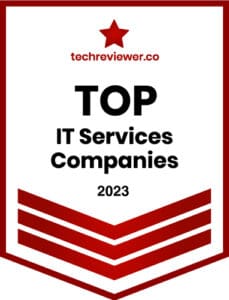Cloud technology is more affordable and more secure than other data storage options, and at this point, it’s becoming increasingly apparent that server warehouses are falling out of favor. If you want to keep your business up and running on the cutting edge, then successfully migrating your information and data to cloud storage is one of the best strategies available. But what characterizes successful cloud migration? We’re happy to break it down.
1) Understand Your Needs
The first thing step is to understand the specific needs of your business. You can consider this step your intelligence gathering stage. How much information are you moving? Who has access to the data? Will you need to accommodate for potential business growth? When you can understand what your needs are, you can be in a better place to make actionable decisions about your migration process.
Take our Cloud Computing Readiness Assessment to find out what cloud computing services are the right fit for you.
What If You Have On-Prem Requirements?
It may be the case that some of your data needs to stay on the ground and in a server rather than in cloud storage. This is particularly true for sensitive information that needs extra protection or more restricted access. If you do have some on-prem requirements, that isn’t a deal-breaker for your cloud migration. However, it does mean that you will have to be more selective in your user access and data movement.
2) Find a Good Cloud Partner
Cloud technology is a bit more complicated than server warehouses, even if the basic premise is the same. For cloud technology, it’s important that you find a reputable cloud partner who can store all of your information and give users appropriate access, particularly if your business will continue to grow. To be sure, not all cloud partners offer the same amount of data storage or the same level of access.
For businesses, it’s important that your cloud partner can handle multiple users accessing the cloud and running applications and programs from the cloud. Additionally, you may want to choose a cloud partner with a multi-cloud environment or clouds that can be scaled to match your business. Many businesses prefer using cloud partners who have good track records with similar companies and offer higher integration assistance levels, which will make the migration process much more manageable.
3) Figure Out Your Roll-Out Plan
One of the essential features of good migration to cloud technology is figuring out your roll-out plan. When we talk about roll-out, we’re referencing what data is moved and when and when users will be able to access that data. For example, are you going to be moving all of your programs first, or will you be moving all of your data first?
Your roll-out plan is instrumental in determining how quickly your migration process will go. You essentially will have two options for your roll-out. The first option is to bring your operations to a halt, move all of your data and programs, and set up new users before bringing everything back online. The second option is moving information, programs, and users bit by bit until everything is stored on the cloud.
Which Roll-Out Option Is Best?
Ultimately, the roll-out option that is best for your business depends on how much you want to interfere with your daily operations. For some companies, particularly smaller ones, it makes more sense to shut everything down for the migration. For larger companies, a slow integration process may make it easier to keep up with daily operations, especially if your operations can’t really stand to stop for any period of time.
4) Prioritize Your Information
The next thing you will have to do is prioritize your information. What this means is you need to identify your most important data so you can move that data onto the cloud first. Your most important data may also need to be synced with an on-prem serve just to make sure everything is secure. Prioritizing your information ensures that all of your vital daily operations are easily and quickly accessible while you sort through other roll-out protocols.
Furthermore, this is the ideal time to clean up your data when moving to a cleaner slate in the cloud. The minute you choose to migrate, your primary focus needs to be on assessing the value of the data versus the volume of data you will be moving. The more data you migrate, the longer and more complex your migration is likely to be.
As such, we advise spending time to clean up your server before running your test migration. This can result in a more fluid migration, fewer performance issues, and even greater productivity once in the cloud. Please remember the best time to do a cleanup is before the migration, and not during the migration.
5) Integrate Security
One of the most significant advantages of cloud technology is the ability to increase your data security. Cloud technology enables you to have better encryption for sensitive data, regulate access to important data, and set up security layers and checkpoints that will protect your data from hacking and other cyber threats.
Integrating security into your cloud migration process means you are setting up safety standards as you go. When compliant firewalls and other cybersecurity tools secure your information, you put your business in a better position to respond to threats. In fact, one of the most critical parts of integrating security into your cloud technology is the ability to be proactive rather than responsive to any data breaches.
6) Appoint a Migration Manager
It’s also important to appoint a migration manager. Even if you are using a third-party firm to handle your migration needs and organize your roll-out, it’s vital to have a migration manager who keeps track of the entire process. A migration manager will be in charge of identifying which bits of information and applications are being moved, will work to set up users with access to the cloud accounts, and will be in contact with the third-party firm handling your migration.
You will need to consider several steps if you want your migration process to cloud technology to be successful. For example, you will need to understand your business’s needs and identify cloud partners that can adequately serve these needs, including the level of integration you will need to achieve. You will also need to prioritize your data, figure out a roll-out plan that works for your business operations, and integrate security into your cloud storage to keep your data safe.
To get started with your successful cloud migration process today, contact Edafio’s Cloud Computing specialists for intelligent solutions powered by people.








